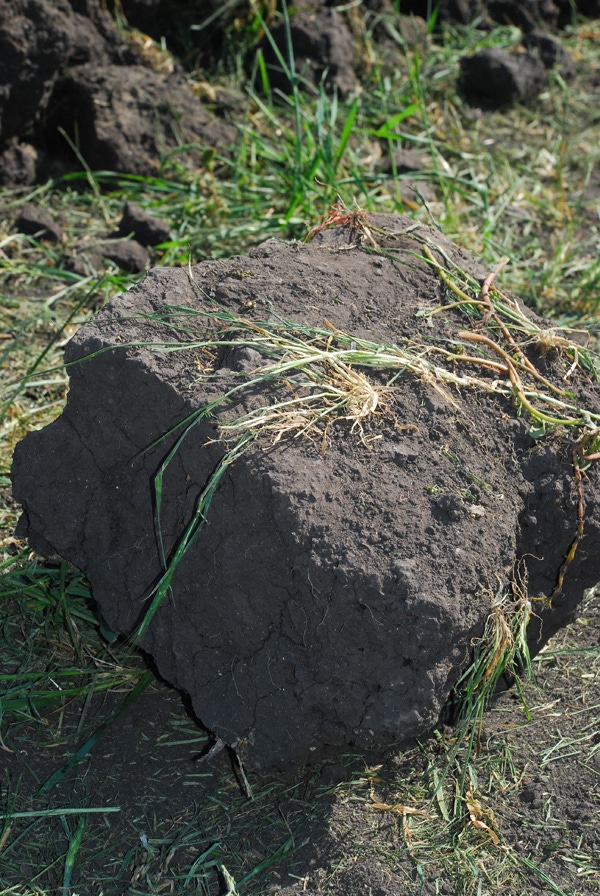July 21, 2016

Soil compaction in corn and soybean fields can mean a yield loss. However, there are four things producers can do to prevent the problem.
1. Check soil moisture.
The most effective way to minimize soil compaction is to avoid field operations when soil moisture is at or near field capacity, and it is important to check for proper soil moisture conditions prior to implementing any field operation.
Soil compaction will be less severe when soil tillage, fertilizer application and planting operations occur when the field is dry.
For soils with a medium texture, a simple method of checking soil moisture is the "feel" method. Probing the top 3-4 feet with a hand soil probe to assess the field's soil moisture conditions is time well spent.
Check the soil moisture status by pushing a ribbon of soil from between the thumb and index finger. If it breaks off within one or two inches, the potential for creating compaction is less. However, if the ribbon stretches out to four or five inches, it is still too wet. The chances are good that being in the field under these conditions may cause more problems than it will solve.
Another method is to make a ball of soil two inches in diameter and toss it through the air. If it hangs together until impact, it has a lot of cohesiveness, is still fairly plastic and probably is too wet to work the ground.
2. Tire size.
Properly adjusted tire size and correct air pressure for the axle load being carried is a second management tool. Larger tires with lower air pressure allow for better flotation and reduce pressure on the soil surface. Additionally, using larger tires that are properly inflated increases the "footprint" on the soil.
3. Same wheel tracks.
Use the same wheel tracks to minimize the amount of land traveled across. Most damage occurs with the first pass of the implement. Using control traffic patterns can be done effectively by using implements that have matched wheel-tread configuration for soil preparation, planting, row cultivation, spraying and harvesting.
4. Conservation.
Remember to hold off soil tillage operations until soil conditions are drier than field capacity and look into the benefits of conservation tillage systems.
In wet conditions, the best choice producers can make is to stay away from the field and avoid traffic on wet soil to reduce soil compaction. How you approach planting and fieldwork after a heavy rain event can impact your soil and your crop development for the rest of the season.
You May Also Like




